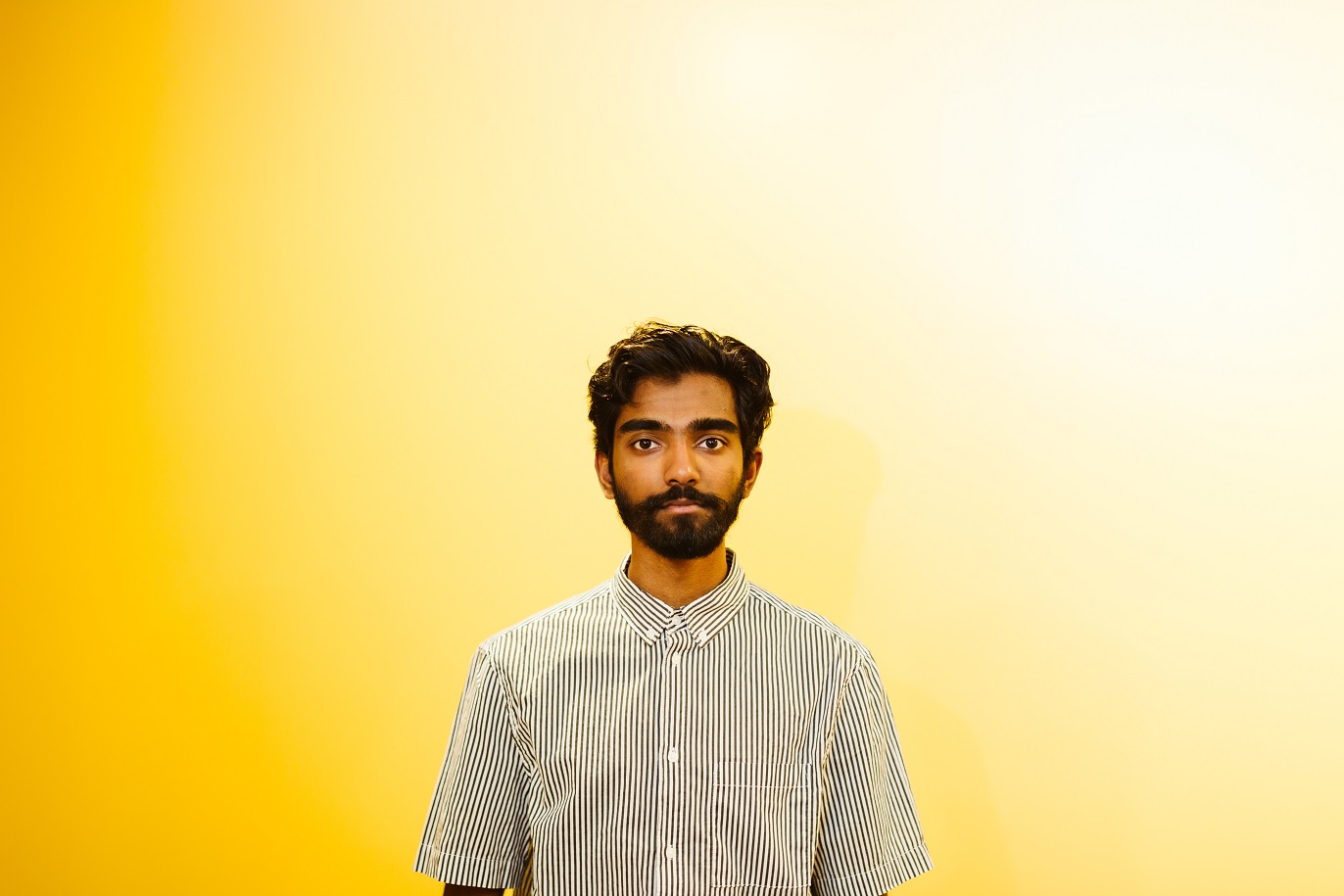The new collaborative album from veteran musicians Justin Stanton, Becca Stevens, Michael League, Gisela Joāo, and Louis Cato is an experiment in reflections and connection, resulting in an eclectic and distinctive debut record.
Stream: ‘Mirrors’ – Mirrors
We’re looking at ourselves in the mirror, but the mirror is the same for everyone.
At this point in 2021, talking about the pandemic and its effect on the music industry is exhausting. After the initial shock, the first several months of COVID lockdown produced a kind of tentative fascination with the possibilities that home music-making presented. Though touring was cancelled for the foreseeable future, creatives began to do what they always do: innovate. Unexpected collaborations emerged, pop stars were making albums from their bedrooms, and livestreamed concerts were enjoyed from couches across the world. But after a year or so, the shine started to wear off. Motivation was difficult to maintain, creativity was slow to spark, and though the world was starting to reopen, nothing felt the same.
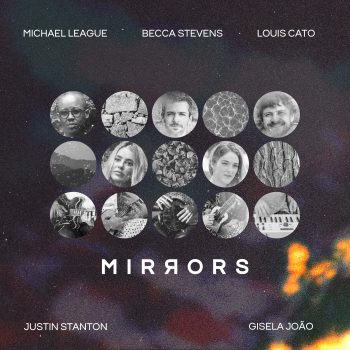
But lately, there have been a few things to cut through the exhaustion. In August of 2020, five musicians gathered under a single roof in Portugal with a unique vision for collaborative record. Inspired by a 1989 album by bluegrass supergroup Strength in Numbers, Snarky Puppy member Justin Stanton and his partner, Portuguese fadista Gisela Joāo, invited Becca Stevens, Louis Cato, and Michael League to write and record an album using the same concept: five musicians, ten songs, every possible pair. As Mirrors, they made a self-titled collection of songs that are as unifying as they are distinct.
Though the majority of the group knew each other either from prior collaborations or by association, most had never performed, let alone written music, with each other. Joāo, especially, was only meeting many of the others for the first time. In spite of this, or perhaps because of it, each song is an unexpected blend of style and form. The opening track “Can’t Stop Moving,” written by Stevens and Cato, features an eerie melody in Stevens’ ethereal voice over Cato’s skittering drum beats, while penultimate song “Tempestade,” written by Joāo and Stanton, is a slow-burning ballad, feeling more like a reprieve from its namesake than the gale itself.
Perhaps the song that most captures the ethos of Mirrors is “The Call,” a spare, taut duet between Joāo and Cato.
Universal, absolutely beautiful
Undeniable
Strong as stone, deep as bone, it’s something new
But something that you know
In each song, there is a question asked and answered; a call that echoes between musicians, familiar and new. If mirrors offer reflections, they also offer a new perspective. In these ten songs, the members of Mirrors hold the glass up to themselves and to each other, discovering new ways to cast their light.
:: stream/purchase Mirrors here ::
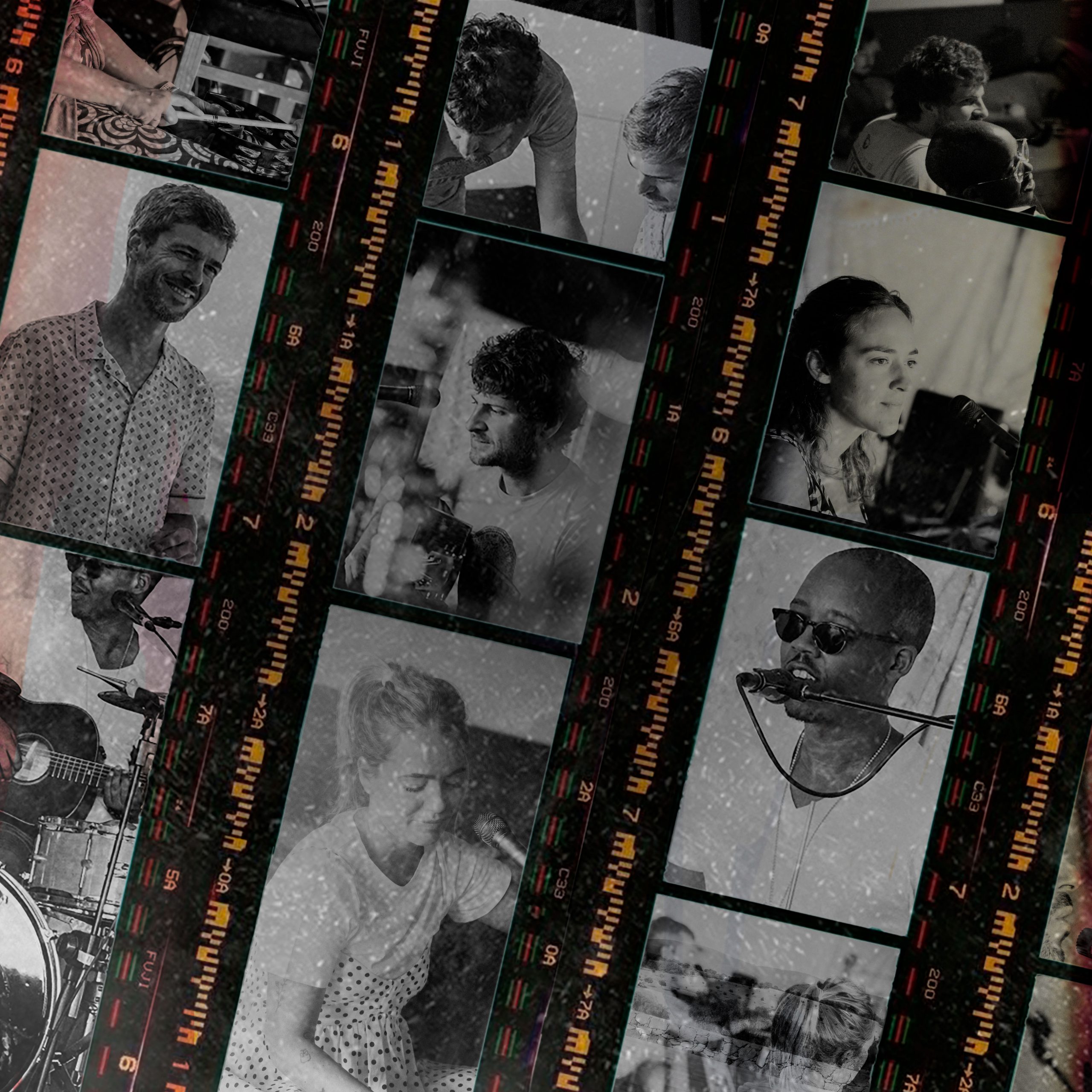
A CONVERSATION WITH JUSTIN STANTON & GISELA JOÃO OF MIRRORS
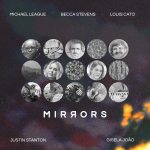
Atwood Magazine: I know this album, at least structurally, was inspired by the 1989 album Telluride Sessions. What about this album was so special to you?
Justin Stanton: The Telluride Sessions was a really formative album for me growing up. It was something my dad showed me when I was young and I continued to listen to it. A few years ago, I got a chance to meet Béla Fleck, who’s one of the members — it’s like a bluegrass supergroup. I brought up the record and he told me the concept of how they wrote the record in pairs, and I thought that was such a cool idea. That was basically the impetus for doing Mirrors that way. Gisela and I were vacationing and thought it’d be a cool idea to bring our friends together, maybe rent a house and get some recording gear and record some songs together. Then it blossomed into this full fledged project.
You all stayed and worked together in a house in Portugal. How did that writing process work? Was it weird or less so because you’re all so familiar with each other?
Justin Stanton: There were varying degrees of familiarity. I’m gonna let Gisela tell it from her perspective, too, but just to give you a starting point, I knew everybody in the group. I think Mike knew everybody in the group. But Becca and Gisela didn’t know each other, Louis and Gisela didn’t know each other. Becca and Louis knew each other by association, but hadn’t ever worked together. So it was interesting to see how people came together. As kind of a failsafe plan before showing up to work, I made a Dropbox folder and told everybody, “If you’ve got ideas sitting on your phone or demos on your computer, or any sort of recordings that are half-finished or just ideas, we’ll create a reservoir of musical ideas to work from.” Some of the ideas and songs came from those starting points, and some came from scratch. The single from the record, “The Call,” Gisela and Louis’ song, started completely from scratch.
Gisela Joāo: Louis was playing the drums and I was listening, and it made me feel the ambience of some [other] songs I love. I just started improvising and saying some words in Portuguese that he couldn’t even understand. Suddenly, I stopped. And he said, “No, continue, because we’re making something here.” He changed from the drums to the guitar, and he started playing and asked me, “What are you saying in Portuguese, so I can talk about the same thing, but in my mother language?” We started building around the story that we were telling.
That is a beautiful song. I wanted to ask about the music video for that one -- I just love the way the light plays throughout each scene. Can you talk about the video’s conception?
Gisela Joāo: I had worked with that director before [Joāo Montiero], who is a great Brazilian-French director. Rafa Giacondino was the photography and light guy. The light is really important in that video, I’m so glad you noticed that. There’s a line of color that is always showing up in the video. It’s like the connection to your biggest love, whether that is your mom with the umbilical cord, your brothers or sisters, your best friend, or someone that you love or with your pet. There’s always a string that puts you in touch with that person; there’s always a connection. The light is there as a literal poetic translation of what we are trying to say and make people experience when they listen to the song.
What was the most interesting discovery you made while working on this album? What was something challenging about the project?
Gisela Joāo: Well, I think this question is more for me [laughs]–
Justin Stanton: [Laughs] No, that’s not true, it’s for everybody.
Gisela Joāo: No, it is, because the focus of this record, which is these songs we are all writing and composing together, for all of you, it’s nothing new. But for me, it’s totally new. I was super scared to be a part of this. But I found a lot of things in myself as a musician, as a writer, and as a composer,, instead of as a person that sings and does interpretations of songs. It was magical to find my way. Now I know, for example, that for me to make songs, I need someone next to me to play an instrument that is answering to me. I can’t make something just singing alone because I don’t play any instruments. I found that there’s a lot of silence around you when you are composing and writing, instead of the idea that everyone has that, “Oh, if the musicians are making songs, there’s always a lot of noise and a lot of music.” It’s totally the opposite of that. Another thing is that because Justin is my boyfriend, I find that it’s more difficult for me to expose some emotional parts of me to him, instead of to a person that I don’t know so well.
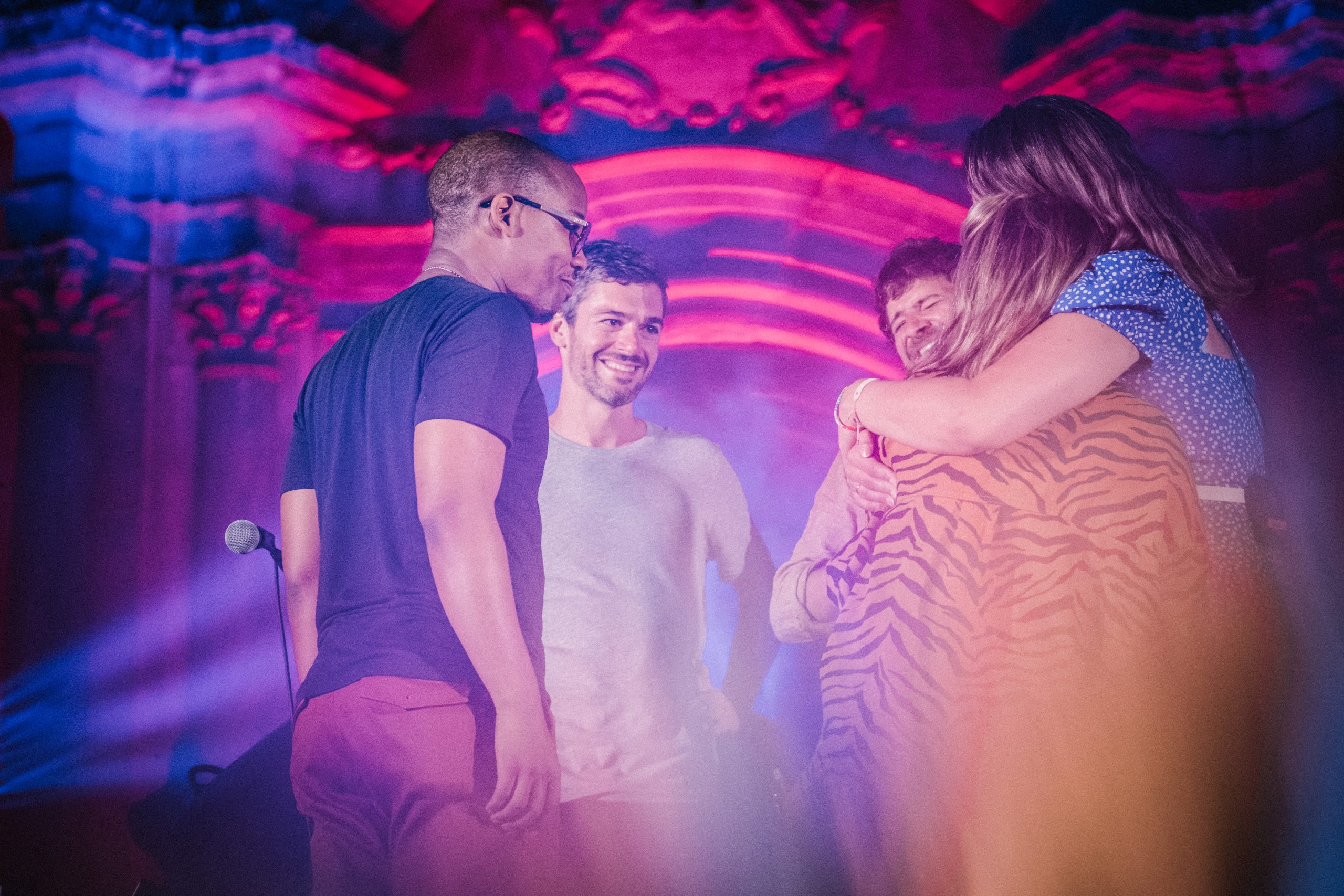
So Gisela, coming from the much more specific and traditional musical background that fado is, what was it like to write and work with people who are maybe more in that pop sphere, or at least more involved in American music?
Gisela Joāo: I sing fado, but I used to say that fado restaurants represent half of me, and discos and clubs represent the other half of me. I grew up listening to fado and singing fado at home, hidden from everyone, and in a little part at school. At the same time, at 14 to 15 years old, I start listening to hardcore techno and hip hop and house music. I don’t listen to just fado.
Justin Stanton: You never listen to fado [laughs].
Gisela Joāo: I do, I just listen to fado in a way that makes me feel that I’m alone. Justin said, “You never listen to fado.” Yes, I listen, but he never noticed that because when I listen to fado, it’s always with the headphones. Fado is like 5% of what I listen to in a week. I listen to a lot of other music, so it was not difficult for me. Of course, if we’re gonna talk in a mathematical way about the language of that kind of music, I don’t know how to talk about that — but I don’t know how to talk about that for fado either.
Justin Stanton: I would say that Gisela was probably coming at this from more of a pop perspective than anybody in the band. I feel like a lot of times, it’s easy for us, the school musicians, to get into these little things that we obsess over, that most people don’t give a shit about [laughs]. Gisela is like, “Why are you worried about this? This is not important.” She is thinking more big picture. So I think it might be the reverse of what you asked.
What is each of your favorite or most meaningful songs that you wrote for Mirrors, and what’s your favorite that you didn’t write on?
Gisela Joāo: Oh my god, I can’t answer. I can’t, because I’m the biggest fan of this record. Last year Justin was like, “Please stop listening to these songs! [laughs]”
Justin Stanton: I kind of feel the same way; I am really a fan of all the stuff in different ways. But with mine and Louis’ tune “Weary,” I felt like we got a hold of something on that one. It felt really nice. I wanted everybody to be involved in all the songs, but not everybody is on every track. Some things just felt right to be minimal.
Gisela Joāo: I don’t have a favorite song or a favorite lyric. But there’s one thing that I really love: in the end, you have a bunch of songs, and it’s incredible that without noticing, everyone was working with a purpose. I look at the songs and in my brain it’s like chess, that all of the songs are fulfilling the space that we needed to make a record. I listen to them and it’s like, I have this story. And that connects to this one and connects to that one. As a singer and as a person that consumes music, too, I don’t remember the last time that I was obsessed with and listening to an entire record from the first song to the end. I swear it’s not because I’m a part of it [laughs], but I can’t stop listening. I feel that we live in a world where everyone is putting out just EPs and singles. You listen to one song and you don’t actually listen to the entire record. Let’s be honest, you have like three songs that you listen to. Here, everyone that talks to me is like, “Fuck, I really listened the entire record. I put the first one on and just noticed it’s the end. That hasn’t happened to me for so long.” I feel the same way.
The pair writing makes for such an interesting result. The way all your writing styles meld together in different ways makes this very distinct from other collaborative projects.
Justin Stanton: I thought the pair thing was cool because you’re inevitably going to complement someone’s — I don’t want to say shortcomings, but maybe where their tendencies kind of leave off. If you’re familiar with the way Mike writes or the way Becca writes, then you can hear those things in the songs that they wrote. But then you get to hear how it’s complemented and how it’s reflected by someone else.
You mention reflection. The concept of “mirrors” is one that comes up a lot in music but is often interpreted so differently. I keep thinking of the SZA lyric, “All that I know is / mirrors inside me / they recognize you / please don’t deny me.” What do mirrors mean to this record?
Justin Stanton: Well, we were searching for a name for the record, and I was on the phone with a friend of mine who’s a pretty creative guy. He writes songs, and he’s a little insane [laughs]. I was like, “Hey, man, I’m getting ready to do this project,” and I explained the concept. I said, “You got anything off the top of your head?” Like the second thing he said was “mirrors,” and I was like, “Damn!” I can’t even take credit for the name of the project. But it seemed perfect.
Gisela Joāo: I really like it, because I always like to find an explanation or a relation, like you said. When Justin asked me, “What do you think about mirrors?” I said, “I think it’s perfect.” Like Justin was saying before, if you know the way [we all] make songs, when you listen to those songs, you will recognize that. But after, you will feel that something is different there because of the connection with the other person. I made this connection immediately with mirrors, because it’s like in our lives, if you’re criticizing something or if you’re watching a movie or a TV show, or theater or music or something, you’re always looking at that with your perspective, what your life teaches you and makes you feel. It’s like you’re always looking at the mirror. Suddenly here, we’re looking at ourselves in the mirror, but the mirror is the same for everyone. You don’t have just your image there. You have four more images of four different personalities next to you, and the reflections that come out of that mirror are in the form of music.
If you had to synthesize this project into one idea or concept, what would it be?
Gisela Joāo: For me, it’s loving music. Something that always makes me respect and love music nerds is that they don’t give a shit about numbers or Tik Tok dances or all those kinds of things. They are a consequence of the music, but the music is always first. Sometimes I feel that we live in a world where music is the last thing that it’s important. The visuals are important. The videos are important. The pictures are important. The branding — the music is the last thing. And for nerds, like all these people [laughs], music is the most important thing. So for me, I would synthesize this project as love for music. It’s cheesy?
Justin Stanton: [Laughs] It is, but it’s good. I guess for me, it’d be unity. Like I said, we just started talking casually about, “Oh, wouldn’t it be cool to get some folks together,” because a year before, both of us had been really busy touring. When our tours were over, we took this vacation in Spain with Mike, some of Snarky Puppy, and some other people. We went around Spain and it was a way to just be like, “Okay, we’re done working. Now let’s enjoy these places that we go. Let’s eat some nice food and go see some things, drink some wine.”
This was the reverse, because we’d all been sitting at home trying to occupy ourselves in different ways. I was like, “Wouldn’t it be cool if we did the vacation, but it was a work thing?” Once we were all in the same room, and there were a lot of complications making this thing happen, it felt so good to be reunited with everybody and to form bonds and new friendships in this way. I think that’s what made the music so special, the bonding and the unity of everybody together. It was something that I think a lot of us were concerned about losing because of everything that was happening, and our futures as they had existed before were uncertain. So for me, it’s the unity and togetherness. It was definitely a bright spot in our 2020 to make it happen.
— — — —

Connect to Mirrors on
Instagram
Discover new music on Atwood Magazine
? © courtesy of the artist
:: Stream Mirrors::


